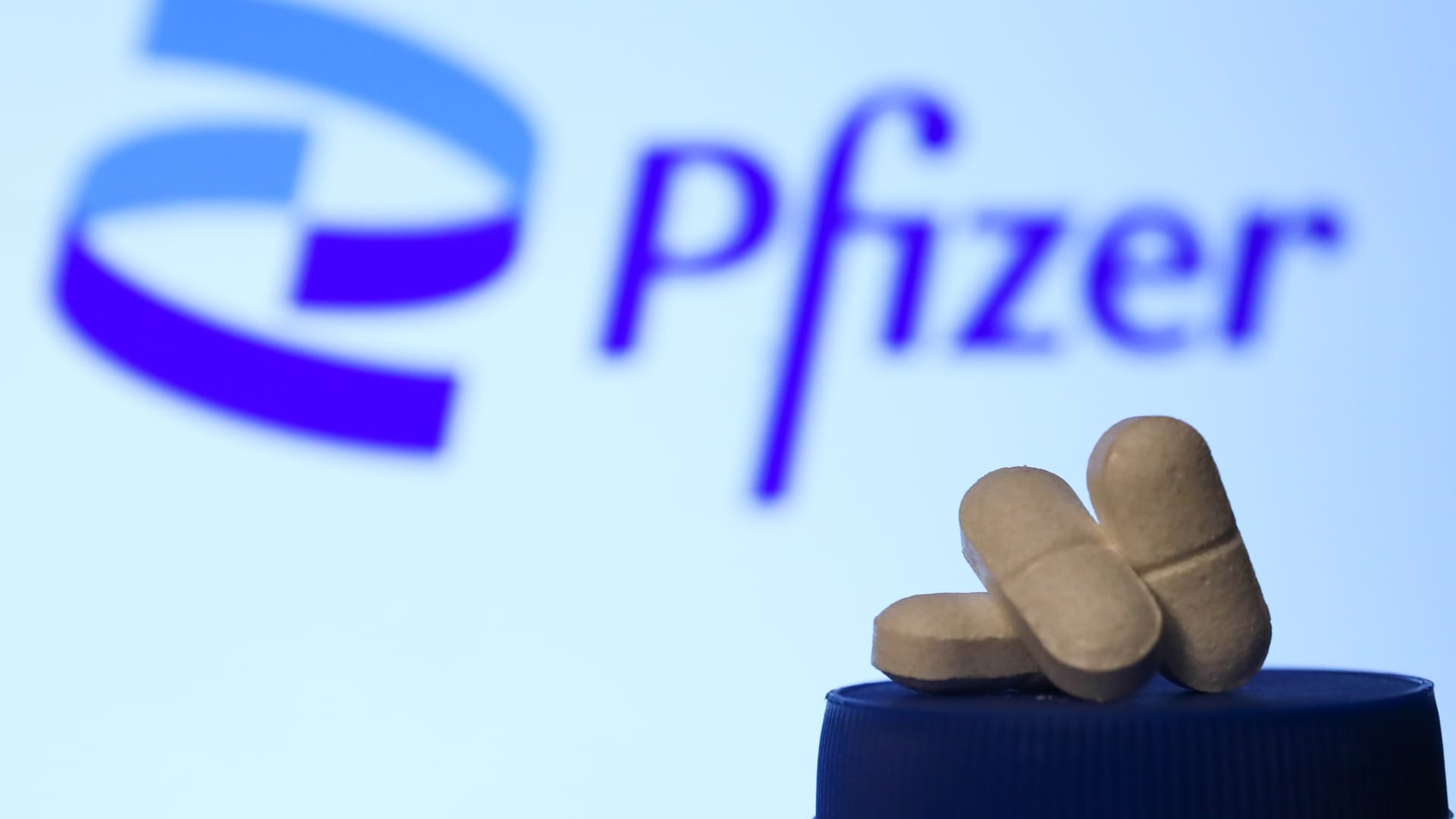Jakub Porzycki | Nurphoto | Getty Images
Pfizer on Wednesday reported first-quarter revenue that beat expectations and hiked its full-year profit outlook, benefitting from its broad cost-cutting program and strong sales of its non-Covid products.
The company now expects to book adjusted earnings of $2.15 to $2.35 per share for the fiscal year, up from its prior guidance of $2.05 to $2.25 per share. Pfizer reiterated its previous revenue forecast of $58.5 billion and $61.5 billion, which it first outlined in mid-December.
The pharmaceutical giant said its new profit guidance accounts for its “confidence” in its business and its ability to slash costs. Pfizer said it is on track to deliver at least $4 billion in savings by the end of the year.
Pfizer’s first-quarter results also benefitted from a smaller-than-feared drop in sales for its Covid antiviral pill Paxlovid.
The results come as Pfizer tries to regain its footing after the rapid decline of its Covid business. Demand for those products has plunged to new lows, and they transitioned to the commercial market in the U.S. last year. As revenue suffers, the company is trying to improve its bottom line and shore up investor confidence through its cost cuts and a renewed focus on treating cancer following its $43 billion acquisition of Seagen last year.
Here’s what Pfizer reported for the first quarter compared to what Wall Street was expecting, based on a survey of analysts by LSEG:
- Earnings per share: 82 cents adjusted, it was not immediately clear if it is comparable to the 52 cents expected.
- Revenue: $14.88 billion vs. $14.01 billion expected.
Pfizer recorded first-quarter revenue of $14.88 billion, down 20% from the same period a year ago, primarily due to the plunge in sales of its Covid products.
For the first quarter, Pfizer booked a net income of $3.12 billion, or 55 cents per share. That compares to a net income of $5.54 billion, or 97 cents per share, during the same period a year ago.
Excluding certain items, the company posted earnings per share of 82 cents for the quarter.
Notably, the company said its adjusted and non-adjusted profit got an 11 cents per share boost from a $771 million final adjustment to the estimated $3.5 billion revenue reversal recorded in the fourth quarter, reflecting 5.1 million courses of Paxlovid returned by the U.S. government by Feb. 29.
Paxlovid booked $2 billion in revenue for the quarter, down 50% from the same period a year ago. That decline was mainly due to lower deliveries around the world as the product transitioned to commercial market sales, along with lower demand in China.
Meanwhile, Pfizer’s Covid vaccine generated $354 million in sales, down 88% from the year-earlier period. That drop was also driven by lower contract deliveries and demand in international markets, as well as lower U.S. volumes, partly reflecting the seasonality of demand for vaccinations.
Shares of Pfizer fell roughly 40% in 2023 as demand for Covid treatment Paxlovid and its vaccine against the virus dried up, causing the company to dramatically slash its full-year revenue forecast and record multibillion-dollar charges related to inventory write-offs. Pfizer also disappointed the street with an underwhelming launch of a new RSV shot and a twice-daily weight loss pill that fell short in clinical trials.
Non-Covid product strength
Excluding Covid products, Pfizer said revenue for the first quarter rose 11%.
The company said that growth was partly fueled by Seagen’s products, which brought in $742 million in revenue for the quarter. That includes a targeted treatment for bladder cancer called Padcev and another drug that treats certain lymphomas.
Pfizer completed its acquisition of the drugmaker in December.
The company said revenue also got a boost from strong sales of Vyndaqel drugs, which are used to treat a certain type of cardiomyopathy, a disease of the heart muscle. Those drugs booked $1.14 billion in sales, up 66% from the first quarter of 2024.
Analysts surveyed by FactSet had expected that group of drugs to rake in $909.1 million for the quarter.
Pfizer also said its blood thinner Eliquis, which is co-marketed by Bristol Myers Squibb, helped drive revenue growth. The drug posted $2.04 billion in revenue for the quarter, up 9% from the same period a year ago.
Analysts had expected Eliquis to rake in $1.95 billion in sales, according to FactSet.
A group of shots to protect against pneumococcal pneumonia brought in $1.69 billion in sales for the first quarter, up 6% from the year-ago period. That growth was driven by uptake among children in the U.S. and government purchases, among other factors.
Analysts had expected that group of shots to book $1.63 billion in sales for the quarter, FactSet estimates said.
Meanwhile, Pfizer’s new vaccine against respiratory syncytial virus, or RSV, saw $145 million in revenue, primarily driven by uptake among older adults. The shot, known as Abrysvo, entered the market during the third quarter for seniors and expectant mothers who can pass on protection to their fetuses.
The vaccine fell short of analysts’ estimate of $360 million in revenue for the first quarter, according to FactSet.
Pfizer’s medication for certain breast cancers, Ibrance, generated $1.05 billion in revenue for the period, down 8% from the same period a year ago. The decline came as the drug faced competitive pressure and price decreases in certain international markets.
Revenue from that drug was roughly in line with what analysts were expecting.







